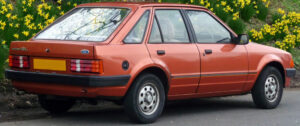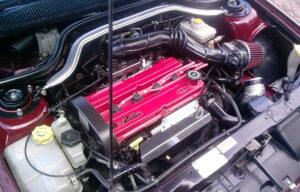Ford Escort: Should You consider it as a good car?
2. Performance and reliability
3. Pros and cons of owning a Ford Escort
4. Engineering and design of the Ford Escort
Ford Escort model years
Is Ford Escort a good car? Here are the Ford Escort models and their production years:
Ford Escort Mk1: 1968–1974
Ford Escort Mk2: 1975–1980
Ford Escort Mk3: 1980–1986
Ford Escort Mk4: 1986–1992
Ford Escort Mk5: 1990–1992 (Europe) / 1991–1996 (North America)
Ford Escort Mk6: 1995–2000 (Europe) / 1997–2002 (North America)
Ford Escort Mk7: 1999–2004 (Europe, sold as the Ford Focus in North America)
Performance and reliability
Performance: The Ford Escort offered varying levels of performance across its different generations. Earlier models, such as the Mk1 and Mk2, were known for their simple yet robust engineering, providing adequate performance for their time. As the Escort evolved, later generations introduced more powerful engine options and improved handling characteristics, catering to a wider range of driving preferences.
Reliability: Overall, the Ford Escort gained a reputation for reliability, particularly in its earlier iterations. Its straightforward mechanical design and durable construction made it a dependable choice for everyday driving. However, like any vehicle, reliability can vary depending on maintenance history, driving habits, and individual vehicle condition.
Pros and cons of owning a Ford Escort
Pros:
- Affordability: The Ford Escort was often priced competitively within its segment, making it an accessible option for budget-conscious buyers.
- Fuel Efficiency: Many iterations of the Escort offered good fuel economy, appealing to those seeking economical transportation.
- Practicality: With its compact size and versatile design, the Escort was well-suited for urban commuting and everyday use.
- Availability of Parts: Due to its popularity and long production run, spare parts for the Ford Escort are relatively easy to find, which can contribute to lower maintenance costs.
Cons:
- Limited Features: Especially in earlier models, the Ford Escort may lack some of the modern amenities and convenience features found in newer vehicles.
- Performance Variability: While later generations of the Escort improved in terms of performance, earlier models may feel underpowered compared to contemporary cars.
- Rust Issues: In regions with harsh climates or poor maintenance, some Ford Escorts are prone to rust, particularly in areas such as the wheel arches and undercarriage.
- Interior Quality: The interior materials and build quality of some Escort models may not meet the standards of more upscale competitors.
Engineering and design of the Ford Escort
- Simplicity and Durability: Throughout its production history, the Ford Escort maintained a focus on simplicity and durability in its engineering. This approach contributed to its reliability and ease of maintenance.
- Evolution of Design: The design of the Ford Escort evolved over its various generations to reflect changing automotive trends and consumer preferences. From its humble beginnings as a basic compact car to its later iterations featuring more modern styling cues, the Escort adapted to remain relevant in the market.
- Platform Sharing: Like many vehicles of its era, the Ford Escort shared platforms with other models within the Ford lineup, allowing for cost savings and engineering efficiencies.
- Safety Features: While early models may lack some of the advanced safety features found in modern cars, later generations of the Escort introduced improvements such as airbags and anti-lock brakes to enhance occupant protection.
Are you already a proud owner of a Ford Escort? If so, check out our selection of parts for this car at the following link:
https://octoclassic.com/product-category/ford/escort
Photos sources: Bring a Trailer, flickr.com, auto-swiat.pl, autodata1.com











